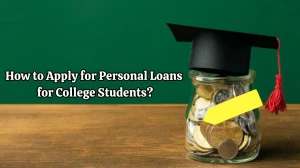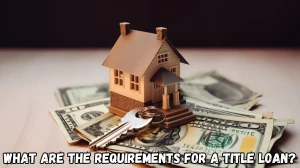
What is a PPP Loan? How to Apply for a PPP Loan?
A PPP loan, or Paycheck Protection Program loan, is a federal relief initiative aimed at assisting businesses, self-employed individuals, nonprofits, and certain tribal entities in sustaining their workforce during the COVID-19 pandemic.
Updated Nov 29, 2023
On This Page
What is a PPP Loan?
The Paycheck Protection Program (PPP) was established by the U.S. federal government in 2020 as a crucial component of the Coronavirus Aid, Relief, and Economic Security Act (CARES Act).
With a total budget of $953 billion, the program aimed to provide financial assistance to specific entities, including businesses, self-employed individuals, sole proprietors, certain nonprofits, and tribal businesses. Its primary objective was to help these entities continue paying their workers during the economic challenges brought about by the COVID-19 pandemic.
Under the PPP, eligible entities could apply for low-interest private loans designed to cover essential expenses, primarily payroll costs. The loan amount was calculated as approximately 2.5 times the applicant's average monthly payroll costs. In some cases, a second draw was allowed, typically equal to the first.
The funds obtained through PPP loans could be used to cover payroll, rent, interest, and utilities. Furthermore, the loans could be partially or fully forgiven if the businesses maintained stable employee counts and wages.
How to Apply for a PPP Loan?
Applying for a PPP loan was a critical step for small businesses during the COVID-19 crisis, aimed at maintaining their workforce. The program, which concluded on May 31, 2021, provided financial support to eligible businesses, but you can check for small business loans as well.
Although new applications are no longer accepted, those who obtained a PPP loan can seek forgiveness by contacting their lender and submitting necessary documents. Alternatively, the SBA PPP Direct Forgiveness Portal offers an online application option for a streamlined process.
How Can You Apply for PPP Loan Forgiveness?
If your business obtained a PPP loan and has not applied for forgiveness, you still have the opportunity to do so. While there are restrictions on the specific expenses eligible for forgiveness, many businesses can offset a portion of their PPP debt through the forgiveness process. Applying for PPP loan forgiveness involves several key steps:
1. Contact Your PPP Lender
- Reach out to your PPP lender and obtain the appropriate forgiveness application form, which could be SBA Form 3508, SBA Form 3508EZ, SBA Form 3508S, or an equivalent form provided by your lender.
- Click Here to View all the Application Forms Mentioned Above.
- The 3508EZ and 3508S are streamlined versions for borrowers meeting specific criteria. Seek guidance from your lender on the submission process.
2. Compile Your Documentation
- Gather necessary documentation for both payroll and non-payroll expenses incurred or paid during the covered period.
- For payroll expenses, provide bank statements, third-party payroll service reports, tax forms, and documentation of employer contributions to insurance and retirement plans.
- Non-payroll documentation includes proof of business mortgage interest payments, lease agreements, and utility payments.
3. Submit the Forgiveness Form and Documentation
- Complete the loan forgiveness application and submit it to your lender along with the required supporting documents.
- Follow up with your lender to provide any additional documentation requested promptly.
4. Maintain Communication with Your Lender
- Stay in communication with your lender throughout the forgiveness process.
- If the Small Business Administration (SBA) conducts a loan review, your lender will notify you of the review and the subsequent decision.
- You have the right to appeal certain SBA loan review decisions.
At MarketsHost, we unravel the complexities of Loans, equipping you with the knowledge and tools needed to navigate the financial world with confidence.
Who is Eligible for a PPP Loan Forgiveness?
To qualify for PPP loan forgiveness, businesses must adhere to specific eligibility criteria outlined by the Small Business Administration (SBA). Meeting these requirements is essential for businesses that received a Paycheck Protection Program (PPP) loan, providing a pathway to potentially have the loan forgiven. Here are the key eligibility factors that businesses need to fulfill in order to be considered for PPP loan forgiveness.
- Your business received a PPP loan prior to the program's conclusion on May 31, 2021.
- At least 60% of the loan funds were utilized for payroll expenses, encompassing salary, wages, tips, and benefits.
- The remaining 40% of the loan funds were allocated to other eligible expenditures, such as rent, utilities, and mortgage interest.
- You maintained consistent employee levels and compensation during the covered period spanning 8 to 24 weeks after obtaining the loan.
- Application for forgiveness must be submitted within 10 months following the conclusion of the covered period.
Who is Not Eligible for a PPP Loan Forgiveness?
Certain circumstances can render a borrower ineligible for PPP loan forgiveness. It's crucial to be aware of these factors to ensure compliance with the program's requirements. Here are some reasons that may make a borrower ineligible for PPP loan forgiveness:
- If the borrower did not allocate at least 60% of the loan proceeds for eligible payroll costs, forgiveness may be impacted.
- If the borrower reduced its employee or compensation levels during the covered period and did not restore them by the safe harbor deadline, forgiveness eligibility may be compromised.
- Non-submission of necessary documents and information to the lender or the Small Business Administration (SBA) as part of the forgiveness application process may result in ineligibility.
- Engaging in any illegal or fraudulent activity connected to the PPP loan can lead to disqualification from loan forgiveness.
What is the Deadline for PPP Loan Forgiveness?
The deadline for PPP loan forgiveness is flexible. While the Paycheck Protection Program (PPP) officially ended on May 31, 2021, existing borrowers have the liberty to apply for forgiveness at any time until the maturity date of the loan. However, it's crucial to note that if borrowers fail to apply for forgiveness within 10 months after the last day of the covered period, the deferral of PPP loan payments comes to an end.
In such a scenario, borrowers will commence making loan payments to their PPP lender. This flexible timeframe allows borrowers to initiate the forgiveness process and avoid the resumption of loan payments within the specified period.
What is a PPP Loan - FAQs
1. What is a PPP loan?
A PPP loan, or Paycheck Protection Program loan, is a federal relief program designed to assist businesses in maintaining their workforce during the COVID-19 pandemic.
2. Who is eligible for a PPP loan?
Small businesses, self-employed individuals, nonprofits, and certain tribal entities that have been financially impacted by the pandemic are eligible for a PPP loan.
3. How much can you borrow with a PPP loan?
Borrowers can generally receive a loan amount equal to 2.5 times their average monthly payroll costs, up to a specified limit.
4. How can PPP loan funds be used?
PPP funds can be used for payroll costs, rent, utilities, and mortgage interest, with at least 60% of the loan amount dedicated to payroll expenses.
5. Is PPP loan forgiveness available?
Yes, PPP loans may be forgiven if certain criteria, such as using the funds for eligible expenses and maintaining employee and compensation levels, are met.




